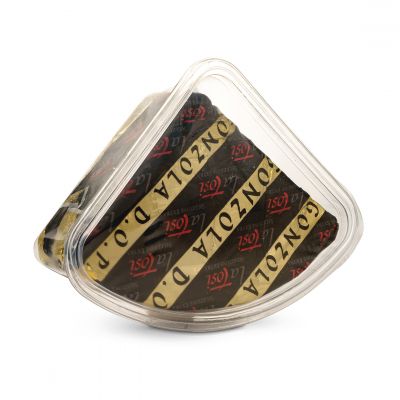ONE OF THE SMALLEST PRODUCERS OF GORGONZOLA PDO IN THE CONSORTIUM, WHERE THE WORD ‘ARTISANAL’ FINDS ITS FULL MEANING: LET'S GET TO KNOW THE CONSORZIO TOSI ON THIS INCREDIBLE JOURNEY THROUGH PIEDMONT
Lots of craftsmanship: this is the feeling I take home from my visit to the Caseificio Tosi, one of the smallest producers in the Gorgonzola PDO Consortium, where processing is still truly artisanal. We often speak of ‘artisanal production’, with the risk that this word, so much overused, ends up being emptied of its true meaning: time, effort, handcrafted skills, dedication.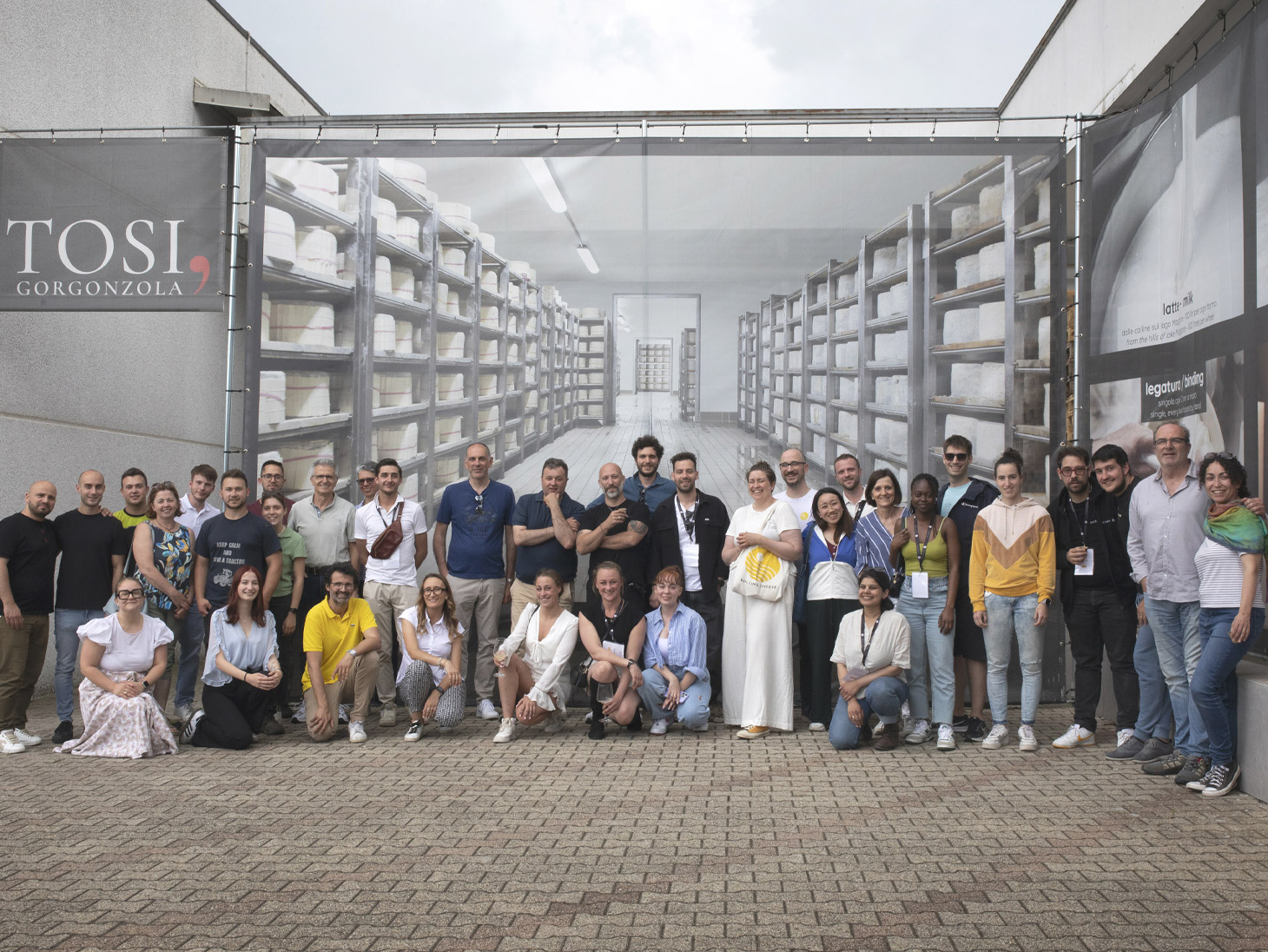
But by observing the various stages in the production of this cheese, the word ‘artisan’ regains its full meaning: the curd is extracted by hand and placed in bundles, the bundles are tied by hand and placed in moulds, the moulds are turned by hand every two hours until late in the evening. But let's proceed with order. It is June and I have the opportunity to visit the dairy during a tour of a couple of days between the lakes and the Langhe organised for a group of international customers.
We are welcomed by Miranda and Fabrizio Tosi together with Miranda's husband Andrea. But there is also Santino Tosi, watching us from a bench under the trees at the entrance to the dairy. It was him who founded the dairy in the 1960s, to produce the cheeses he needed for his shop. Fabrizio joined his father in the 1980s, in production, and with him, the dairy began to be dedicated almost exclusively to Gorgonzola, but still without the maturing process.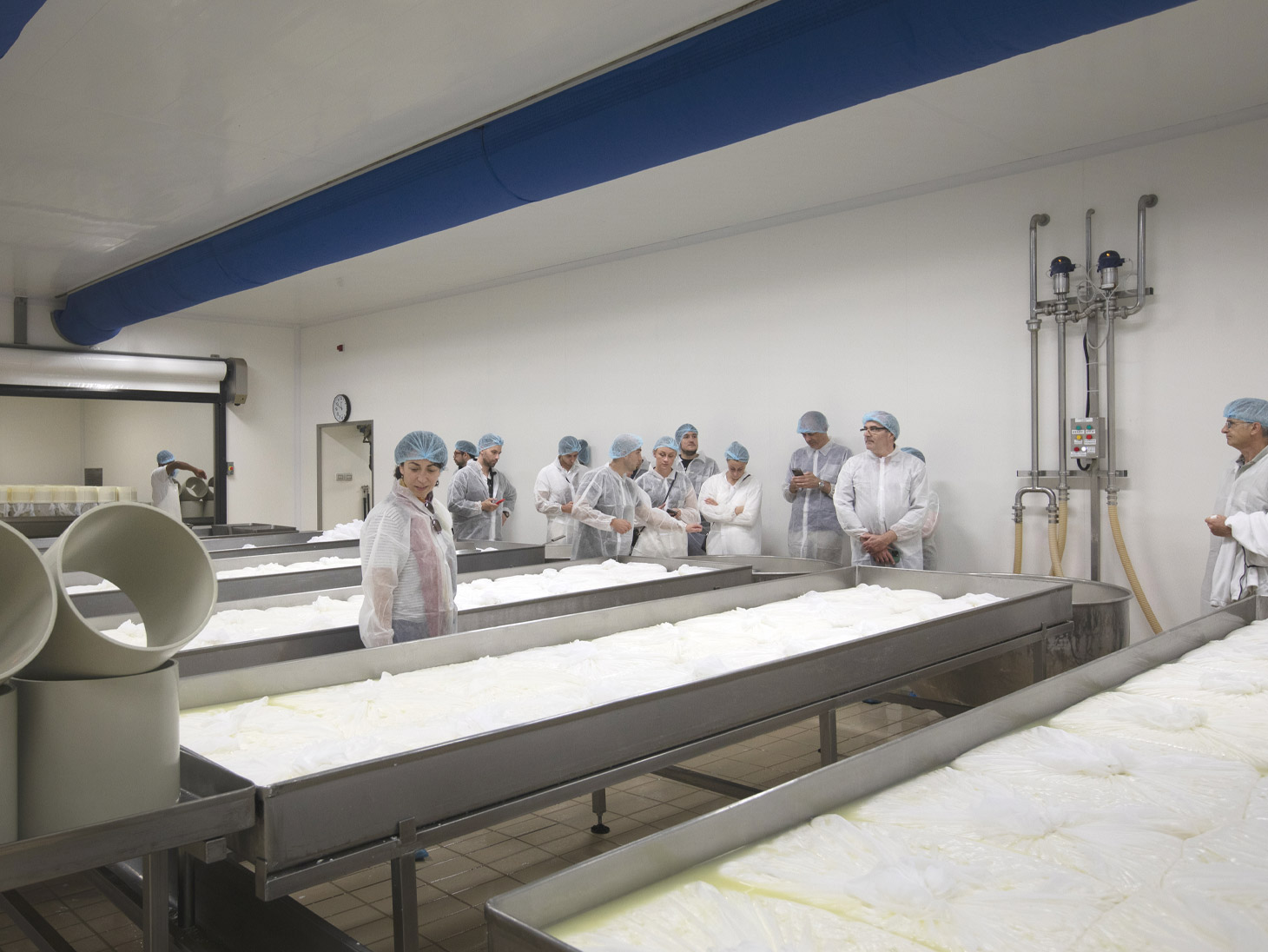
This was only brought to the company in the 2000s, when Miranda and Andrea joined the business. From here on, Caseificio Tosi took the structure that we know today. The milk is collected in the area around Lakes Maggiore and Orta, from 8-10 cowsheds depending on the season, half of which are less than 1 km from the dairy. We had the opportunity to visit one of them in Gattico-Veruno, just 700 metres away, the one of Godio brothers.
It is a farm run by two young men who have recently taken over from their father, with good hygiene and great attention to animal welfare, even though it is not a very small herd, with 200 Friesian cows stabled freely. The dairy processes about 220 quintals of milk per day, which translates into about 200 wheels per day: each wheel requires about 100 litres of milk!
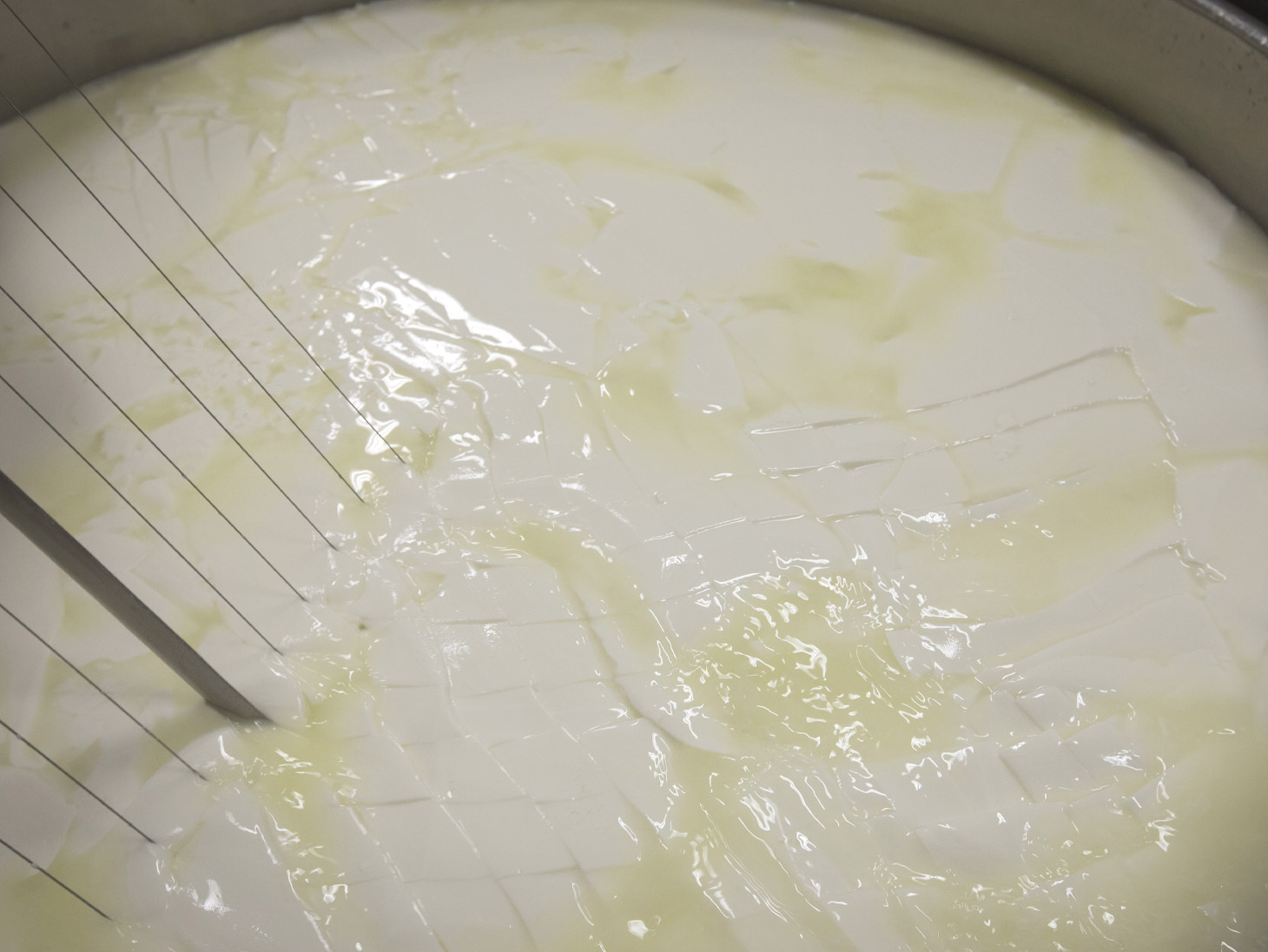
As an indication of what it means that Tosi is one of the smallest producers of the Consortium - with 1% of the total production of Gorgonzola PDO - just think that, on average, the daily production of the other smaller dairies - 9% of production - is around 1,000 wheels per day, while 90% of the market is shared by four big brands, with a daily production of over 20,000 wheels.
Back to us. On arrival, the milk is stored in the tanks at 4°C, to be processed the following day, after all the required analyses have been carried out (aflatoxins, antibiotics, etc.). It is then pasteurised at 71.8°C for 20 seconds, cooled and transferred to the 600-litre boilers already at the required temperature: 31°C for the Gorgonzola Dolce (sweet) and 36°C for the Piccante (spicy).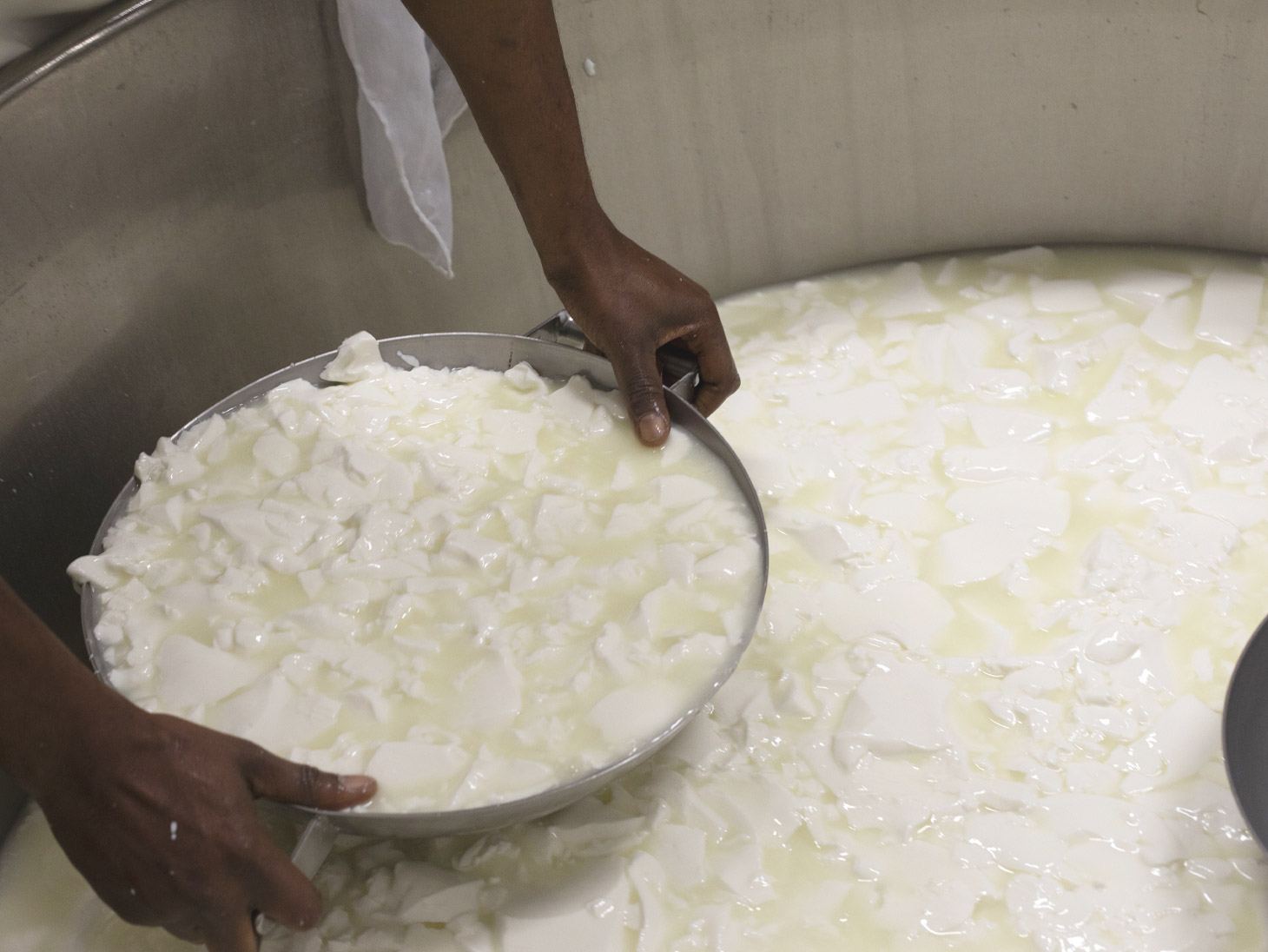
We get dressed and enter the production room: 9 boilers where the milk from the third processing is already coagulating, lots of benches where the bundles from the second processing are resting, and other benches, further down, where the wheels from the first processing are draining. Each boiler produces 6 moulds, explains Monica, Tosi's export manager, who guides us on our visit, therefore 54 moulds for each processing set, for 4 processing per day.
We arrived just in time for the curd to be cut: after the ferments and Penicillium, calf rennet is added to the milk and it rests in order to coagulate for about 20 minutes. The curd is cut twice: first with the sword and, after a 10-minute rest, with the lyre. It is then delicately extracted by hand with ‘ciotole di cavata’, a special steel bowl, and carefully poured into the cloths to form bundles of about 35 kg, which are tied by hand and left to rest for an hour on sloping draining tables.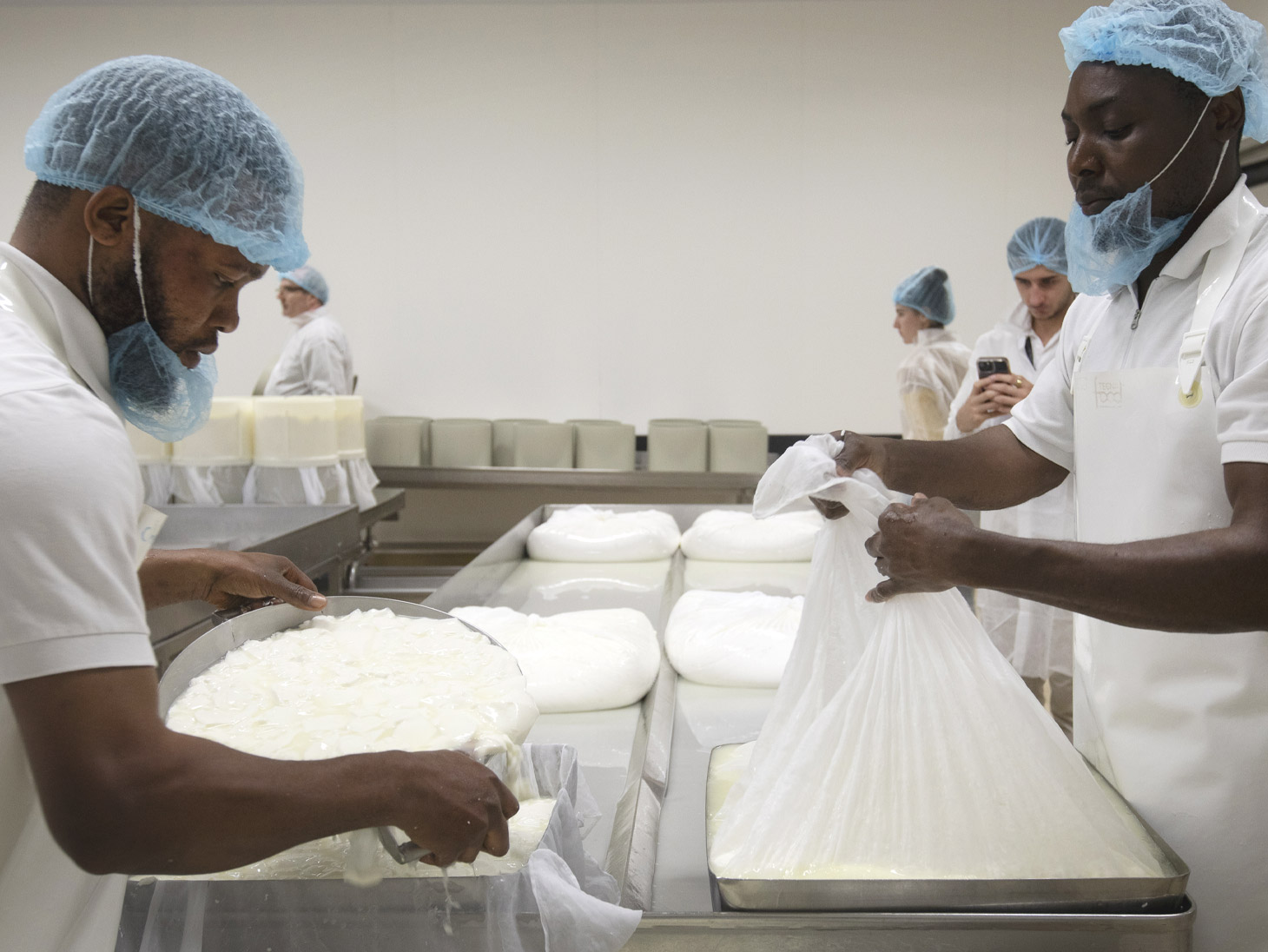
"Tosi is one of the few dairies that still use bundles", Fabrizio tells us. He is the family expert, who knows every detail of production and takes care of the maturing process. Miranda manages the business and administration, while Andrea is the creative and commercial spirit of the company. The bundles are then reopened and the curd poured manually, with the ‘cioto di insacco’ (the sacking bowls), into the double moulds.
As it drains, the curd is compacted and lowered: about an hour and a half after the sacking, the second mould is removed and the cheese is turned over for the first time. After the third turning upside down, the cheeses are stamped on the flat faces by applying the moulds distributed by the Consortium. During the production day they are turned five times in seven hours and, when they reach a pH value of 4.75-4.95, they are taken to the cellar at 5 °C.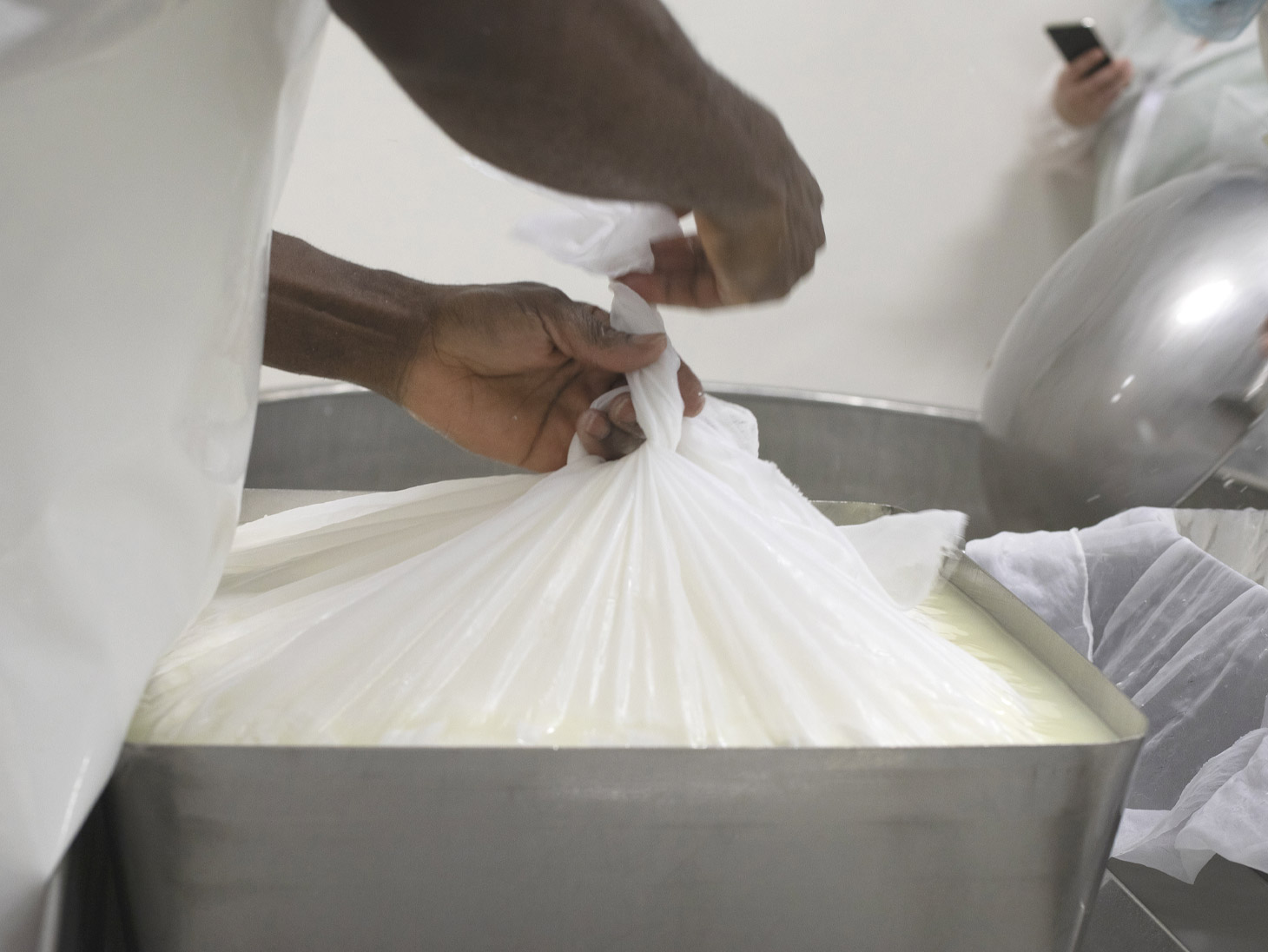
"Processing starts at 5 a.m. with pasteurisation and the last turnings are done at 11 p.m., by a designated person who is also in charge of checking the acidity curve. It takes strength to turn over 200 wheels weighing 25/30 kg so many times, but also a lot of manual skill, it's not as easy as it looks", Fabrizio explains, while we are all busy with our phones filming the turnings.
The cheeses rest overnight in the cell at 5°C and then move on to salting: each wheel is salted twice by hand, strictly dry and, of course, by hand. After the band is applied wrapping the wheels, they are then transferred to the hot room, at 18-23°C, where they stay for about three days, when the actual maturing process begins: at least two months for the dolce (sweet), passing, at the different stages, through cells with a range of temperatures (4-7°C) and humidity (80-90%).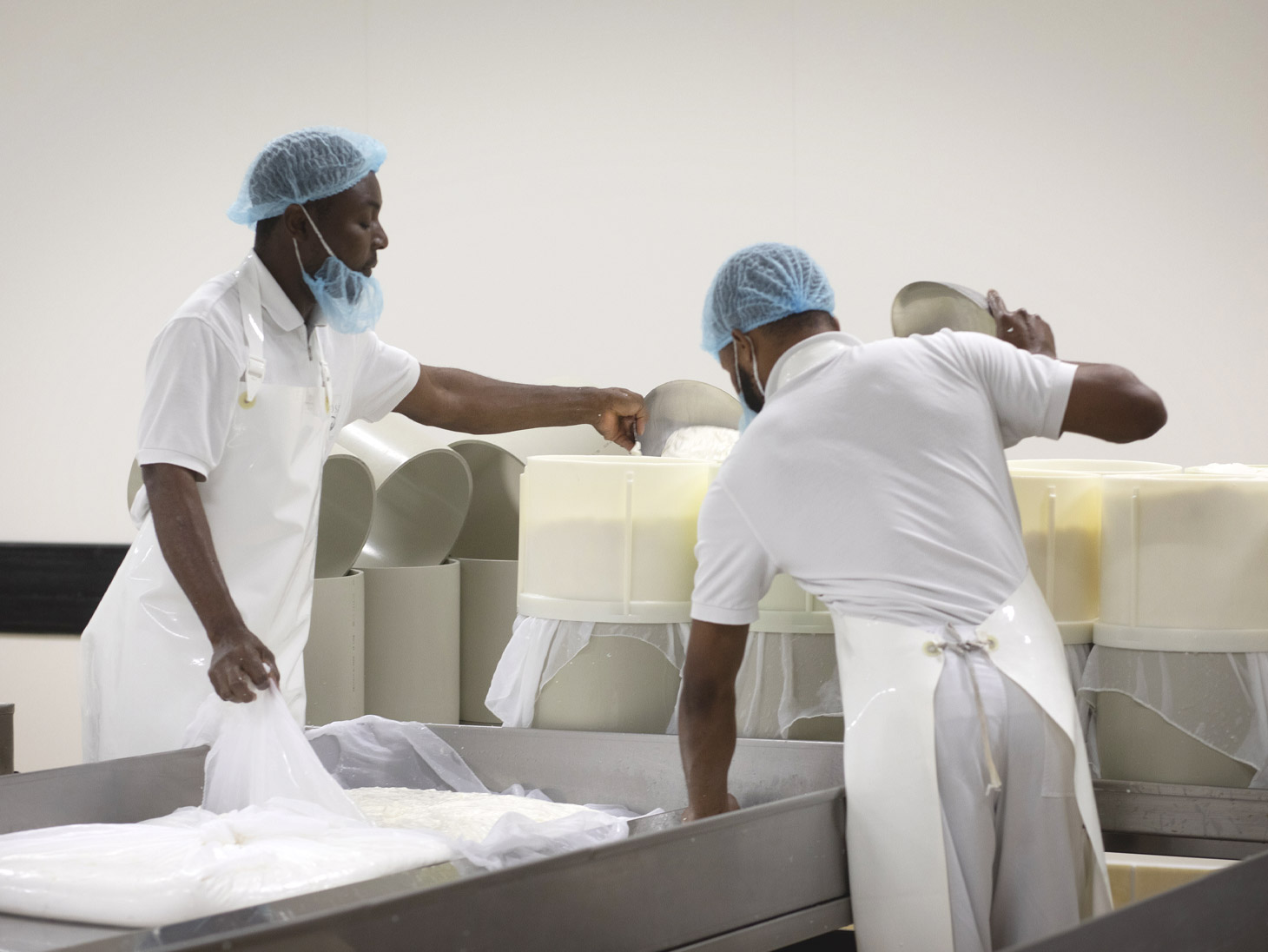
The maturing ladders are made of spruce planks and are sanitized after each processing cycle. Weekly the wheels are punctured with needles, brushed, washed with water and honey vinegar (sulfite-free) and turned. After 50-55 days, each individual wheel is analyzed in both paste and rind to check for pathogens: 50 days is the minimum maturation period set by the Consortium for Gorgonzola PDO Dolce, but Fabrizio prefers to age it up to 70-75 days. 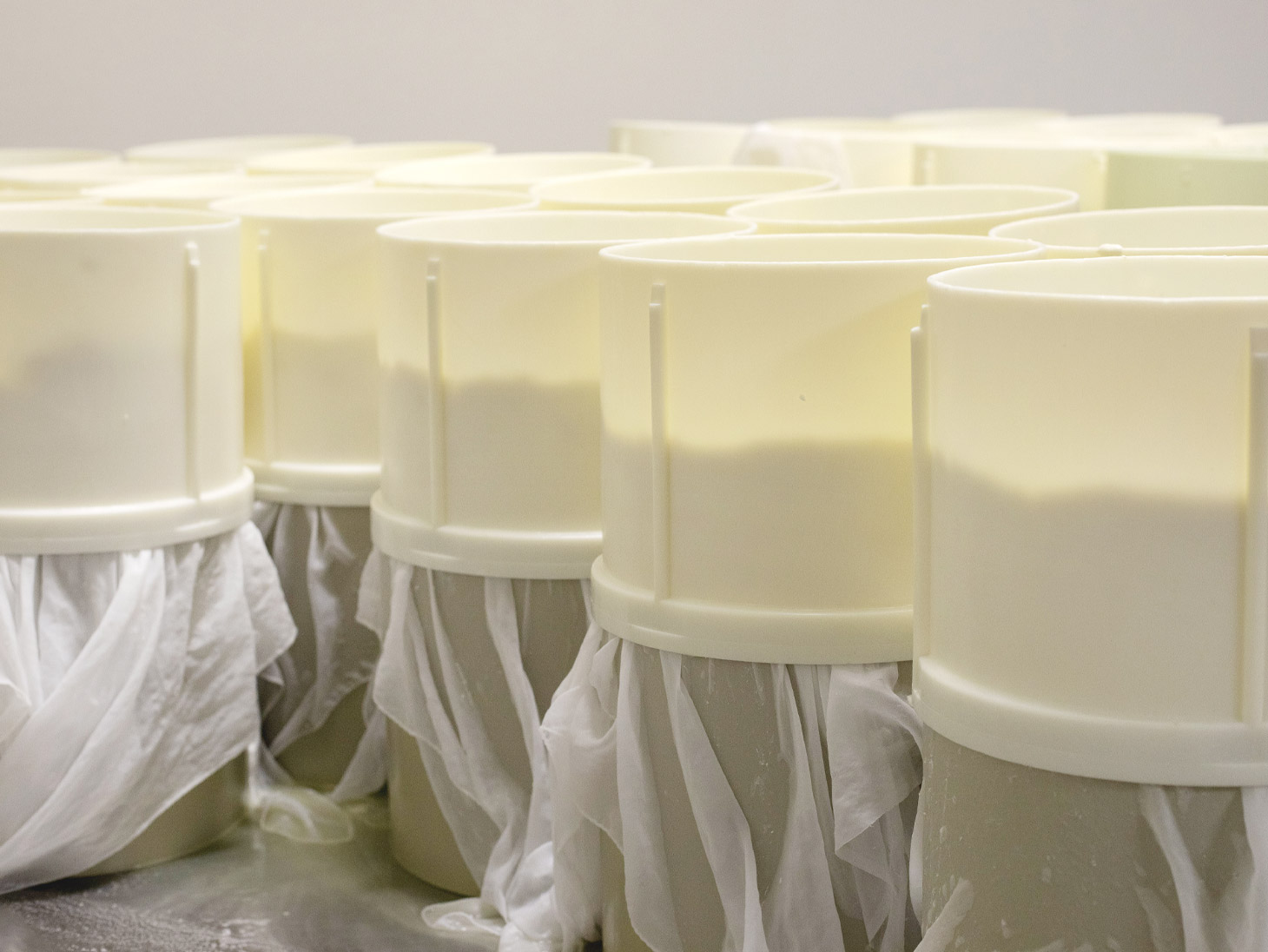
At this stage, he decides which wheels to "bring to spoon" (creamy Gorgonzola that is served by the spoon) with an extended maturation period of up to 90 days. Piccante (spicy), on the other hand, is aged for at least 120 days, 80 is the minimum required by the Consortium. The demand for Gorgonzola PDO Piccante is significantly lower, and therefore so is its production: Tosi produces only one batch per month of Piccante, amounting to about 110 wheels.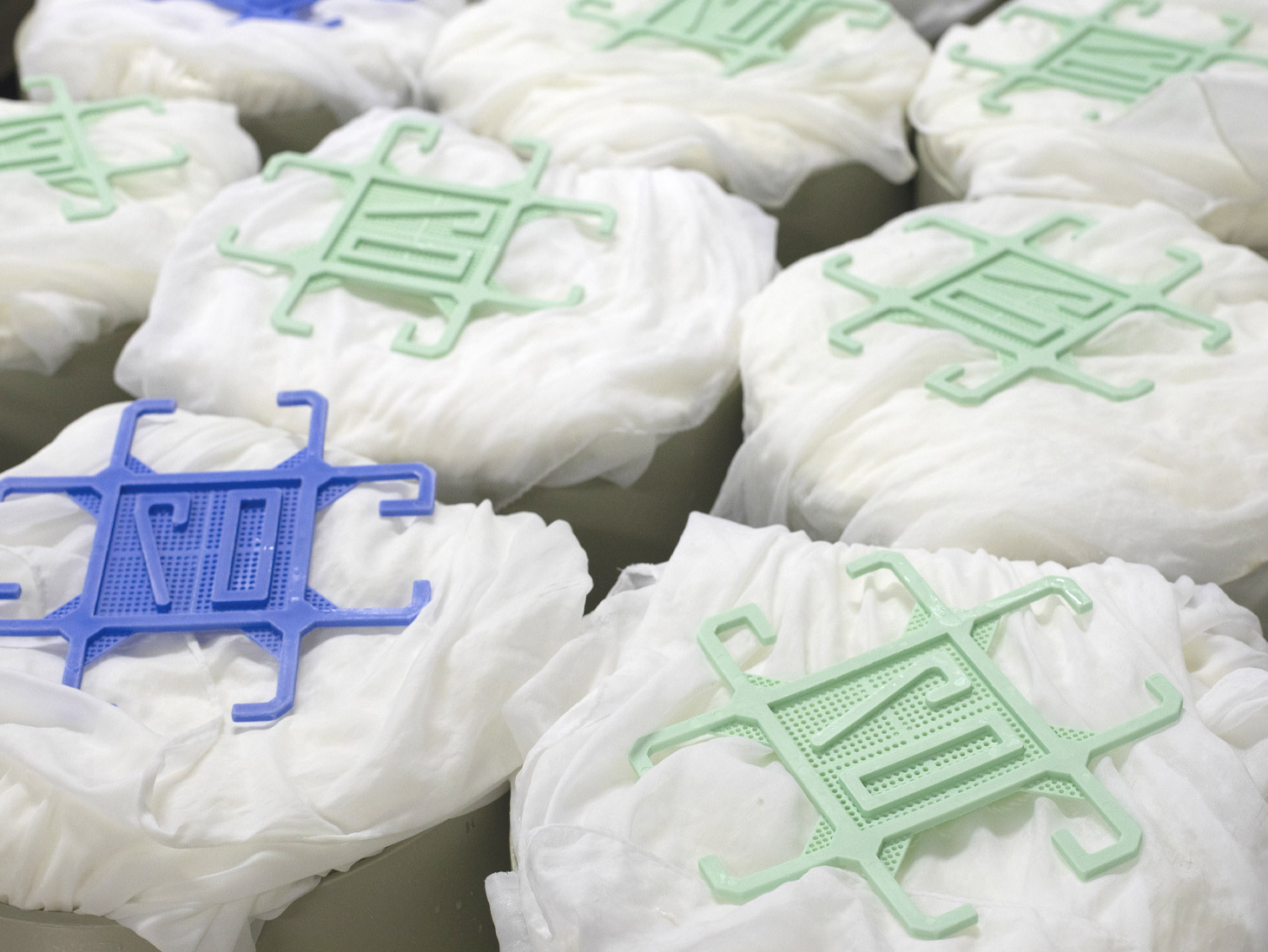
During the aging process, the Gorgonzola is taken out of the band, turned and rewrapped in another one. Near shipment, the wheels are finally portioned, wrapped with embossed aluminum foil as required by the Consortium and sealed with micro-perforated film. The visit could end with nothing but a tasting, and it is Andrea himself who gets to the stove in the tasting room.
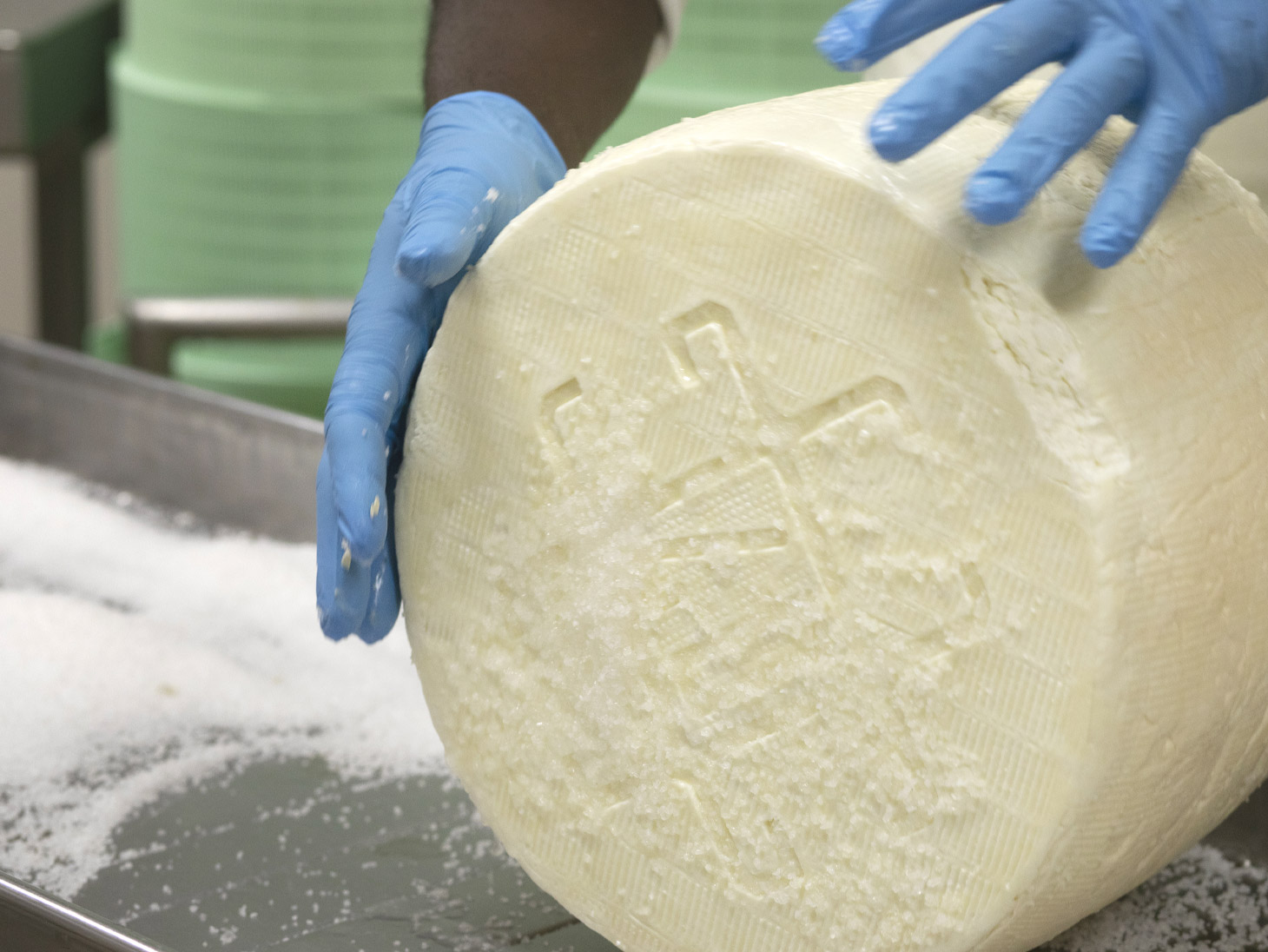
We obviously taste the Gorgonzola in its pure form, both in the Dolce and Piccante versions, but to give customers some suggestions for its use in the kitchen, Andrea has prepared an exceptional menu for us: Focaccia with Sweet and Spicy Gorgonzola; Oysters and Gorgonzola; classic Piedmontese beef tartare with the Spicy one; Erbazzone - a savory pie with vegetables - stuffed with chard and Sweet Gorgonzola; a polenta stuffed with Gorgonzola; roast beef with a spicy Gorgonzola mayonnaise; tomatoes stuffed with tuna, spring onion and Dolce; beef tongue 'in saor', with onion, honey vinegar, raisins and Dolce; risotto blended with Dolce, but finished with a crumble of Piccante; and to end on a sweet note: pears, chocolate and Gorgonzola.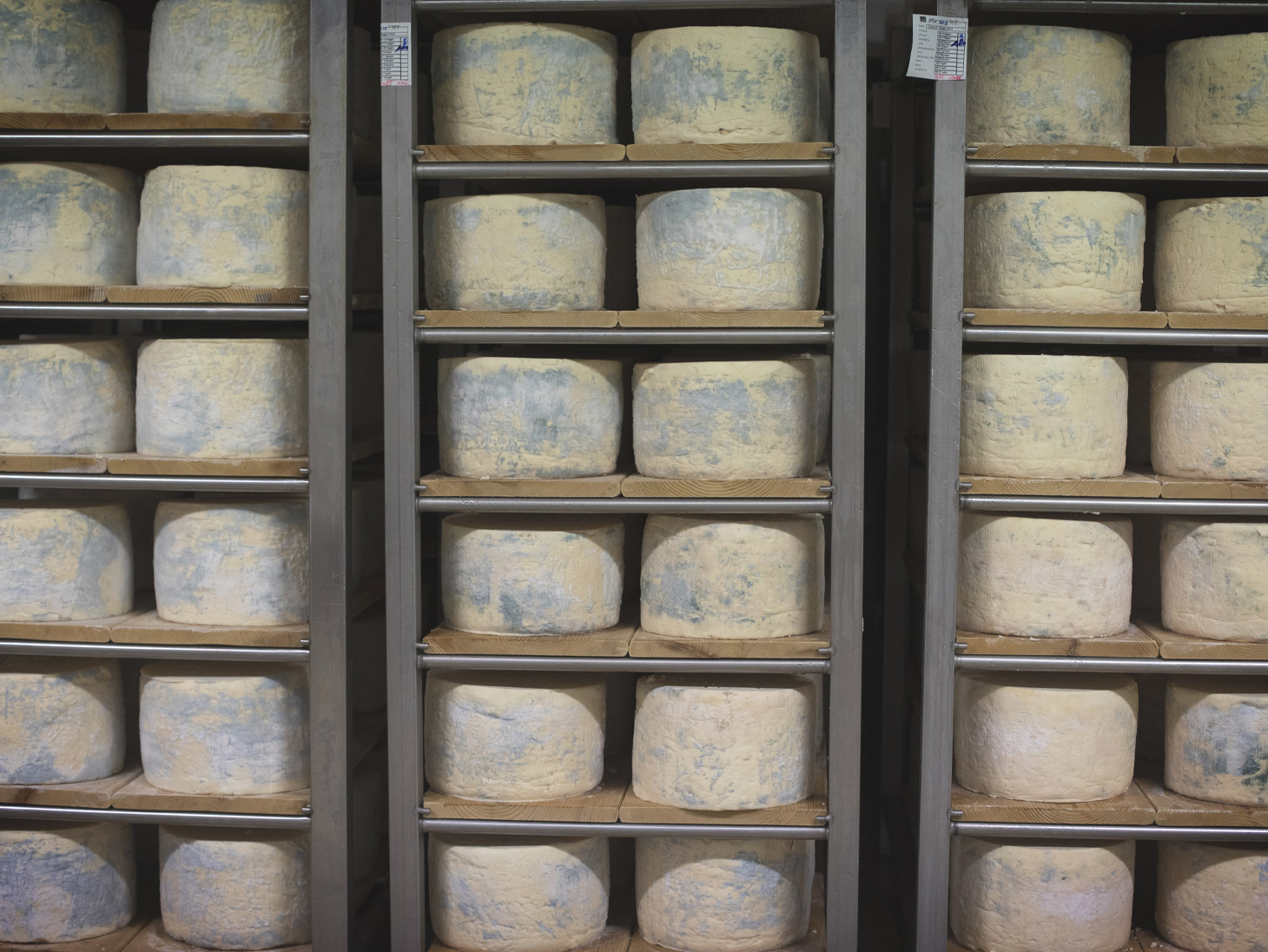
We enjoy this gastronomic experience at the tables set up outside of the dairy. As always, it is hard work!






